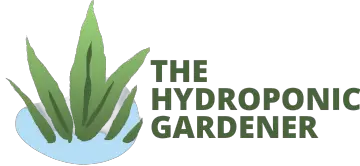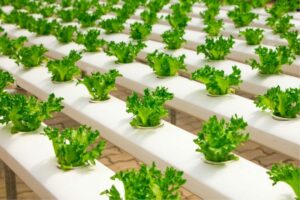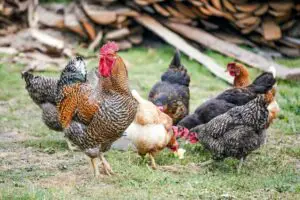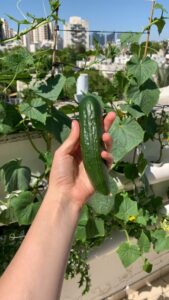Hydroponics is rapidly gaining popularity as a way to grow fresh produce in small spaces without soil. There are several different hydroponic farming systems, each with unique advantages and disadvantages.
The most popular systems are the Nutrient Film Technique (NFT) and Deep Water Culture (DWC). But which one is better to grow plants? In this article, we’ll compare the two systems and help decide which is the best system for your hydroponic gardening.
Now, let’s dive in-depth about NFT and DWC systems.
What are Hydroponics Systems?
The hydroponic growing system utilizes various techniques to create an optimal environment for plant growth. Instead of relying on soil, these systems directly deliver water and essential nutrients to the plants’ roots, promoting faster growth and higher yields.
The absence of soil also reduces the risk of soil-borne diseases and pests, allowing for cleaner and more controlled cultivation.

NFT and DWC systems are among the most popular hydroponic methods due to their simplicity, effectiveness, and versatility. Let’s explore each hydroponic system and examine its key characteristics and pros and cons.
Nutrient Film Technique (NFT) System
The nutrient film technique system is known for growing smaller crops such as herbs and lettuce. In an NFT system, you pump nutrient-rich water through channels or tubes that run through the plant roots. This allows them to absorb the necessary nutrients. The excess water then drains back into a reservoir to be recirculated.
- Low water usage: NFT systems use less water than other hydroponic systems because you can recirculate the nutrient solution.
- Lower risk of disease: NFT systems allow for faster draining, which helps prevent the buildup of harmful bacteria and fungi.
- Easy to set up: NFT systems are relatively simple to set up and require minimal equipment.
Cons of Using NFT
- Plants may not get enough oxygen: Because NFT systems don’t submerge the roots in water, there’s a risk that they may not receive enough oxygen for optimal growth.
- Higher risk of root damage: The exposed roots in an NFT system are more vulnerable to damage from light, pests, and temperature fluctuations.
- Requires regular maintenance: NFT systems require regular monitoring and maintenance to ensure that the nutrient solution is properly balanced and the channels are clear of debris.

Deep Water Culture (DWC) System
The deep water culture hydroponics system is another popular hydroponic system for growing larger plants such as tomatoes and cucumbers.
In a deep water culture system, you suspend the plant roots in a nutrient-rich water solution. The system uses an air pump to provide oxygen to the roots.
Pros of using DWC
- Provides more oxygen to roots: DWC system provides better oxygenation to the roots, which can improve growth and yield.
- Easier to maintain pH levels: Because the roots remain submerged in water, monitoring and adjusting the pH levels is easier to ensure the plants receive the correct balance of nutrients.
- Allows for larger plant growth: DWC systems can accommodate larger plants than NFT systems, making them ideal for growers who want to grow fruiting crops.
Cons of Using DWC
- Higher water usage: DWC systems require more water than other hydroponic systems, as you cant recirculate water solution.
- Higher risk of disease: Because the roots remain submerged in water, DWC systems are more prone to harmful bacteria and fungi and other water borne pathogens buildup.
- Requires more frequent cleaning: DWC systems require regular cleaning to prevent the constant buildup of debris and algae.

Comparison and Considerations
When choosing between NFT and DWC systems for your hydroponics venture, it’s crucial to compare and consider various factors to ensure the best fit for your needs and goals. These include:
1. Yield Potential and Crop Suitability:
- NFT: Nutrient Film Technique (NFT) systems are well-suited for smaller plants and lightweight crops such as herbs, lettuce, and leafy greens. They provide an ideal environment for these plants to thrive and achieve impressive yields.
- DWC: Deep Water Culture (DWC) systems are suitable for a wider range of crops, including larger plants and fruit-bearing varieties. DWC facilitates robust root growth and nutrient absorption, leading to vigorous plants with high yield potential.
Consideration: Assess the specific crops you plan to grow and their growth requirements to determine which system aligns better with their needs. If you have different types of crops, DWC might offer greater flexibility.
2. Resource Requirements:
- NFT: The NFT system is known for its water conservation capabilities. The thin film of perfectly fine nutrient solution recirculates through the channels, minimizing water usage compared to traditional soil-based cultivation. Additionally, you reduce nutrient waste due to efficient nutrient absorption by the plants.
- DWC: DWC systems typically require more water to accommodate the submerged roots. As a result, they may consume more water compared to NFT systems. However, proper management and recycling practices can optimize water consumption.
Consideration: Evaluate the availability of water resources in your region and weigh the importance of water conservation. If water scarcity is a concern, NFT systems may be a more suitable choice.
3. Flexibility and Adaptability:
- NFT: NFT systems are highly scalable and adaptable. You can easily expand them to accommodate larger operations or adjust them to fit limited spaces. NFT also allows for easy rotation of crops, making it a flexible choice for growers looking to maximize their cultivation potential.
- DWC: DWC systems offer flexibility in terms of plant selection and growth. The submerged roots provide stability and support for larger plants or crops that require extensive root systems. DWC can accommodate a wide range of plant sizes and has the potential for continuous cultivation.
Consideration: Assess your space limitations, future expansion plans, and the range of crops you intend to grow. Choose the system that offers flexibility and adaptability to meet your needs.

4. Maintenance and Ease of Operation:
- NFT: NFT systems are generally easier to maintain. Routine tasks include monitoring nutrient levels, ensuring proper channel flow, and checking the air pump and irrigation system. The simplicity of NFT makes it a suitable choice for growers with limited time or experience in hydroponics.
- DWC: DWC systems require regular monitoring of nutrient levels, pH balance, and oxygenation. You must check the submerged roots for any signs of disease or rot. The management of the air pump and air stones is also essential for ensuring optimal oxygenation.
Consideration: Consider your availability and expertise in hydroponics. If you prefer a system with relatively lower maintenance requirements, NFT may be the better option.
5. Stability and Resilience to System Failures:
- NFT: NFT system is vulnerable to power outages or water pump failures, as the flow of the nutrient film depends on continuous circulation. Disruptions in the flow can impact plant health and growth.
- DWC: DWC system with submerged roots, offers a certain level of stability and resilience. Even during a power outage or equipment failures, the roots remain submerged in the nutrient solution, reducing the risk of immediate plant harm.
Consideration: Assess the reliability of your power supply and the potential impact of system failures on your crops. If you anticipate frequent power outages or have concerns about equipment reliability, DWC system may offer a more resilient nutrient solution.
6. Cost Implications and Affordability:
- NFT: NFT system often has lower initial setup costs compared to DWC. The simplicity of the setup and the availability of affordable components make it an accessible option for growers on a budget.
- DWC: DWC system may require a slightly higher initial investment due to the need for larger nutrient solution and additional equipment such as air pumps and air stones. Nonetheless, the potential return on investment can be significant, considering the accelerated plant growth and higher yields achievable with a DWC system.
Consideration: Evaluate your budgetary constraints and long-term financial goals. Choose the system that aligns with your affordability and provides a suitable return on investment.
Which Hydroponics System is Better: NFT or DWC?
In the end, determining which hydroponics system is better, NFT or DWC, depends on a careful assessment of specific requirements, including crop preferences, resource availability, scalability needs, maintenance capacity, budget limitations, and environmental considerations.
While NFT systems offer advantages in terms of water efficiency, adaptability, and lower maintenance, DWC systems support a wider range of crops, provide stability, and yield larger plants. By weighing these factors against individual circumstances, growers can choose the hydroponics system that aligns best with their goals and aspirations.
NFT and DWC systems are popular hydroponic systems with unique advantages and disadvantages. While NFT systems are better suited for smaller crops and require less water, DWC systems provide more oxygen to the roots and can accommodate larger plants.
Ultimately, the choice between the two systems comes from personal preference and the grower’s needs. By considering factors such as space, crop type, water usage, and maintenance requirements, you can decide which system is right for you.
Which hydroponics system, NFT or DWC, is better for beginners?
NFT and DWC systems can be suitable for beginners in hydroponics, but NFT systems are often considered more beginner-friendly. NFT systems are relatively simpler to set up and maintain, with fewer components and less monitoring required.
They are also adaptable to limited space and offer flexibility in crop rotation. However, DWC systems can still be manageable for beginners with proper guidance and a willingness to learn the necessary maintenance routines.
Are NFT or DWC systems more water-efficient?
NFT systems are generally more water-efficient compared to DWC systems. NFT utilizes a thin film of nutrient solution that recirculates, resulting in minimal water consumption. On the other hand, DWC systems require a larger volume of water to accommodate the submerged roots. However, implementing water recycling practices and optimizing nutrient management can make both systems more efficient in water usage.
Can NFT and DWC systems be used for the same types of plants?
NFT and DWC systems are suitable for growing different types of plants. NFT systems are well-suited for smaller plants and lightweight crops like herbs, lettuce, and leafy greens. DWC systems can support larger root systems. Hence they are more versatile and can accommodate a wider range of crops, including larger plants and fruit-bearing varieties.






